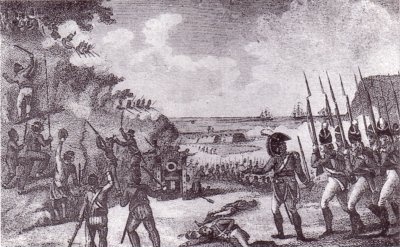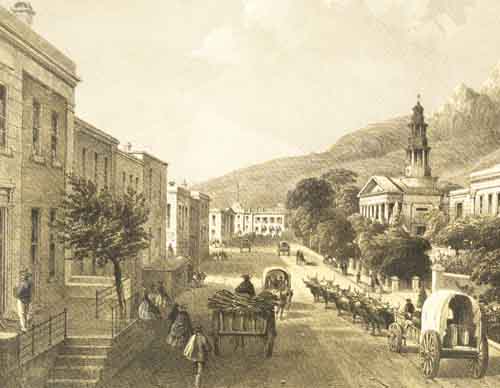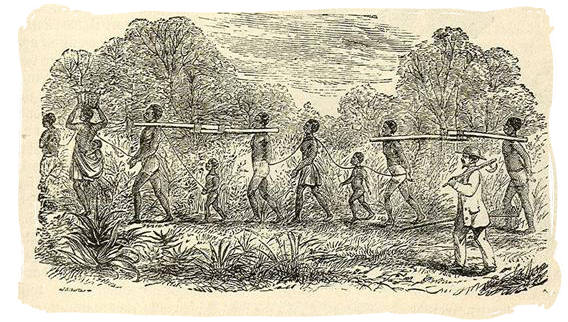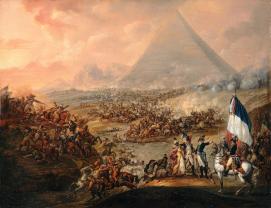Prologue
Prologue of Draka: From the Dutch to the Dominion by former Governor-General of the Dominion of Draka Eric von Shrakenberg, 2008
By Professor Langley Pienaar, Drakan National University, Archona
As the Dominion of Draka nears 150 years of self-government, it is important for us to consider our long history as a people, as a nation. From the earliest days of the arrival of our ancestors on the shores of Capetown, to the Drakan Civil War that reaffirmed our commitment to the Crown, to the founding of the Dominion of today, all the way through the two Great Wars and the present, we have come a long way. Once an enslaving force that marched across the African plain undeterred for nearly half a century, we have since progressed past the ideals of the old, and made ourselves the pride and envy of both the British Empire of the past, and its modern successor, the British Imperial Union, second only to England herself.
But as much as the past is important to us, we must also look to the future. Already humanity continues to expand past Mars and towards the outer reaches of the Solar System, and the Drakan people are proud to be part of the continuous effort to expand throughout space. As it is, we, the Drakan people, of all different races and nationalities, black and white, must continue to look to both the past and the future in order to achieve the goals that we seek.
While many events that still remain freshly ingrained in our memories may hamper our ambitions, I would like to close on a positive note with a life story: as a young white man who had a secret relationship with a foreigner, a Russian immigrant, in the 1930s, a time when racism, segregation and the ideal of white supremacy remained rampant in our society, I thought the future to be bleak. Little did I know that within my lifetime, the Drakan nation has advanced past the ancient stigma of one particular race being superior to others, and has become largely all-inclusive, as was shown two years ago with men and women and boys and girls of all faces gathering together at the Football World Cup, in particular at our victory over Germany - the clamor at the last-second goal that secured Draka's win still rings fresh in many ears, including my own.
And so, while we may not be united in ideals or beliefs, I do believe that one thing unites our nation - a shared history of laughter and tears, of toil and joy, that has evolved over time to allow us to get to where we are now. And I foresee that our past, like the past of other great nations, will continue to shape the future.
********************************************************************************************************************************
Hello everybody, and welcome to my TL. In case you haven't realized it yet, it is an "alternate of an alternate" - an alternate history of the Draka, one where the Draka's expansionism is successfully contained before they went batshit crazy, and is inspired by a map by RoyalPsycho, who so very kindly gave me permission to use it as an inspiration and base for the TL (the link is below if you are curious).
As of now, I will continue to write the TL in the current "history book" format - the prologue is just the tip of the iceberg that will consist of exploring the potential ramifications of a Draka TL without the Draka's hyper-expansionism. I can adjust to different formats, such as the "third-person narrative" used by authors like Harry Turtledove and S.M Stirling, or the "quotes from sources" format used in A World of Laughter, A World of Tears, and the changes will come according to popular demand. I will also attempt to rationalize certain world-building points that the Domination series' author, S.M Stirling, raised throughout the series, such as the wanked United States. I will also play with certain bits of history to explore the greater potential of the butterfly effect in other parts of the world.
In the meantime, please leave feedback, comments and whatnot below, and also let me know about which format you guys like most - I can't satisfy everybody out of the necessity for consistency, but I'll try to adjust the narrative according to popular demand.
Link to RP's map: royalpsycho.deviantart.com/art/Stopped-Short-336520306
Prologue of Draka: From the Dutch to the Dominion by former Governor-General of the Dominion of Draka Eric von Shrakenberg, 2008
By Professor Langley Pienaar, Drakan National University, Archona
As the Dominion of Draka nears 150 years of self-government, it is important for us to consider our long history as a people, as a nation. From the earliest days of the arrival of our ancestors on the shores of Capetown, to the Drakan Civil War that reaffirmed our commitment to the Crown, to the founding of the Dominion of today, all the way through the two Great Wars and the present, we have come a long way. Once an enslaving force that marched across the African plain undeterred for nearly half a century, we have since progressed past the ideals of the old, and made ourselves the pride and envy of both the British Empire of the past, and its modern successor, the British Imperial Union, second only to England herself.
But as much as the past is important to us, we must also look to the future. Already humanity continues to expand past Mars and towards the outer reaches of the Solar System, and the Drakan people are proud to be part of the continuous effort to expand throughout space. As it is, we, the Drakan people, of all different races and nationalities, black and white, must continue to look to both the past and the future in order to achieve the goals that we seek.
While many events that still remain freshly ingrained in our memories may hamper our ambitions, I would like to close on a positive note with a life story: as a young white man who had a secret relationship with a foreigner, a Russian immigrant, in the 1930s, a time when racism, segregation and the ideal of white supremacy remained rampant in our society, I thought the future to be bleak. Little did I know that within my lifetime, the Drakan nation has advanced past the ancient stigma of one particular race being superior to others, and has become largely all-inclusive, as was shown two years ago with men and women and boys and girls of all faces gathering together at the Football World Cup, in particular at our victory over Germany - the clamor at the last-second goal that secured Draka's win still rings fresh in many ears, including my own.
And so, while we may not be united in ideals or beliefs, I do believe that one thing unites our nation - a shared history of laughter and tears, of toil and joy, that has evolved over time to allow us to get to where we are now. And I foresee that our past, like the past of other great nations, will continue to shape the future.
********************************************************************************************************************************
Hello everybody, and welcome to my TL. In case you haven't realized it yet, it is an "alternate of an alternate" - an alternate history of the Draka, one where the Draka's expansionism is successfully contained before they went batshit crazy, and is inspired by a map by RoyalPsycho, who so very kindly gave me permission to use it as an inspiration and base for the TL (the link is below if you are curious).
As of now, I will continue to write the TL in the current "history book" format - the prologue is just the tip of the iceberg that will consist of exploring the potential ramifications of a Draka TL without the Draka's hyper-expansionism. I can adjust to different formats, such as the "third-person narrative" used by authors like Harry Turtledove and S.M Stirling, or the "quotes from sources" format used in A World of Laughter, A World of Tears, and the changes will come according to popular demand. I will also attempt to rationalize certain world-building points that the Domination series' author, S.M Stirling, raised throughout the series, such as the wanked United States. I will also play with certain bits of history to explore the greater potential of the butterfly effect in other parts of the world.
In the meantime, please leave feedback, comments and whatnot below, and also let me know about which format you guys like most - I can't satisfy everybody out of the necessity for consistency, but I'll try to adjust the narrative according to popular demand.
Link to RP's map: royalpsycho.deviantart.com/art/Stopped-Short-336520306




